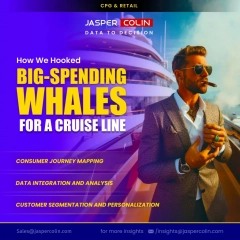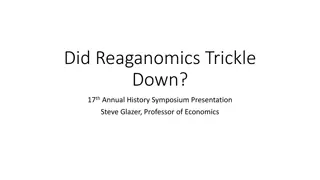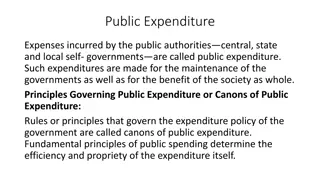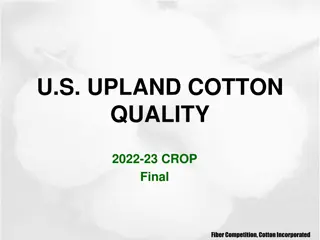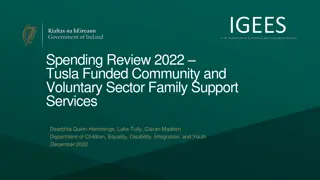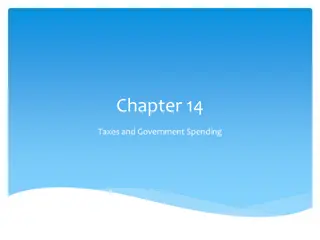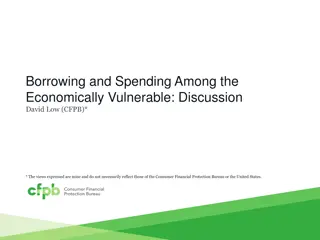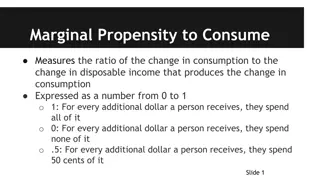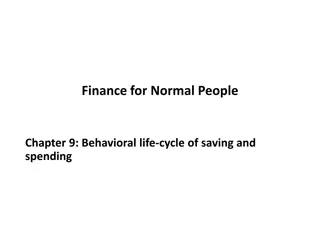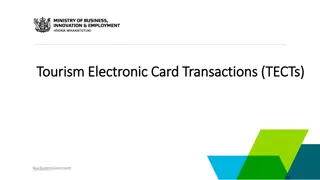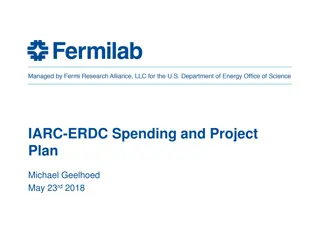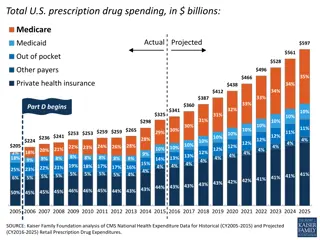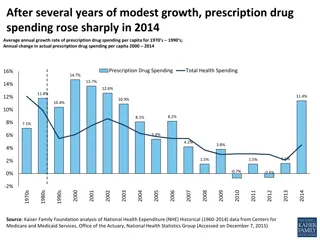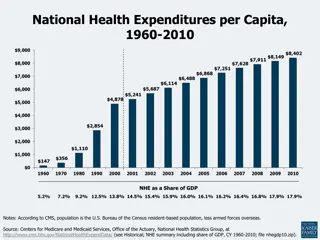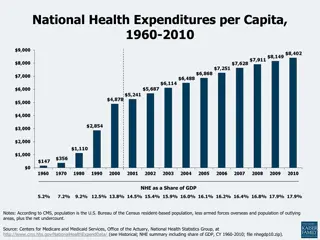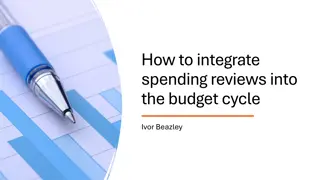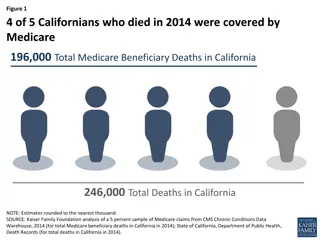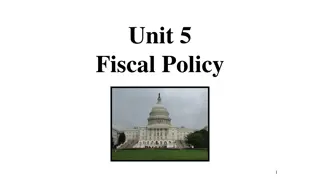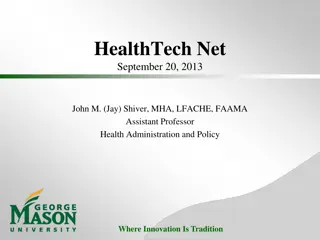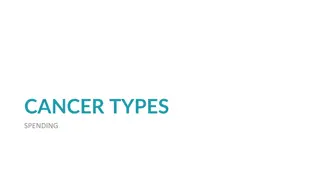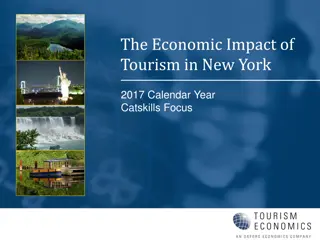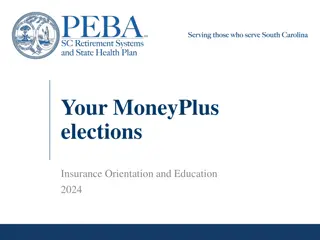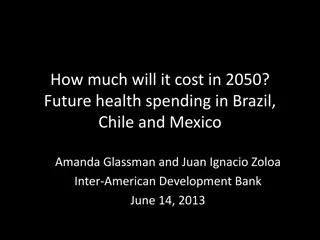DEPARTMENT OF HEALTH AND SOCIAL SERVICES
An overview of the benchmark trend in health care spending in Delaware for the year 2021. It includes data collected from various sources and highlights changes in total health care expenditures, COVID-19 relief payments, per capita spending, quality benchmarks, and more.
5 views • 14 slides
How We Hooked Big-Spending Whales for a Cruise Line
Curious about how a cruise brand reeled in big-spending customers for direct bookings? Discover how we navigated through data chaos to unlock insights and propel growth.
2 views • 6 slides
2024 Health Benefits Enrollment Information for Commonwealth of Virginia
The 2024 Open Enrollment for Health Benefits and Flexible Spending Accounts in the Commonwealth of Virginia is scheduled from May 1 to May 15. This period allows individuals to make decisions regarding health plans, flexible spending accounts, and other benefit options. Changes made during this time
0 views • 39 slides
Get pr newswire Coverage Without Spending a Fortune in US
Our PDF document, \"Get PR Newswire Coverage Without Spending a Fortune in US,\" serves as a comprehensive guide to affordable PR solutions for businesses. This document covers key topics such as the importance of press release distribution, the benefits of leveraging PR Newswire, and strategies for
1 views • 13 slides
Get pr newswire Coverage Without Spending a Fortune in US
Our PowerPoint presentation titled \"Get PR Newswire Coverage Without Spending a Fortune in US\" offers valuable insights into affordable solutions for press release distribution. With a focus on maximizing visibility and reach without breaking the bank, this presentation provides practical tips, ca
0 views • 13 slides
How much healthcare spending is expected to grow in the US?
The CMS Office of the Actuary predicts US health spending to reach a staggering $7.7 trillion by 2032, up from $4.8 trillion in 2023 (7.5% annual growth).
2 views • 6 slides
Reaganomics Impact on Income Disparities and Economic Policies
Reaganomics, introduced during the 1980s by President Reagan, aimed to address economic challenges through tax cuts, decreased social spending, increased military spending, and deregulation. While the top tax rates were significantly reduced, disparities emerged as lower and middle-income groups fac
1 views • 20 slides
Principles Governing Public Expenditure: Canons of Public Spending
Public expenditure refers to expenses incurred by government authorities for maintaining governance and societal well-being. The canons of public expenditure guide governmental spending by emphasizing social benefits, efficiency, proper sanctioning, and fiscal prudence to avoid deficits.
3 views • 26 slides
Upland Cotton Quality Trends and Analysis 2022-23
Explore the latest trends in U.S. upland cotton quality for the 2022-23 crop, including fiber competition data, yield trends, micronaire distribution, average micronaire values, regional comparisons, strength trends, and distribution. Gain insights into micronaire levels, yield trends, and strength
0 views • 30 slides
2022 Tusla-Funded Family Support Services Spending Review
The Spending Review 2022 focuses on tracking and assessing Tusla's investments in Family Support Services (FSS) and its collaboration with the Community & Voluntary sector. Key findings include an 18.6% increase in total FSS spend from 2018-2021, with notable growth in funding for C&V sector FSS. Th
0 views • 6 slides
Understanding Taxes and Government Spending: A Comprehensive Overview
This comprehensive overview delves into the fundamental concepts of taxes and government spending. It covers topics such as the definition of taxes, the power of Congress to tax, limits on taxation, tax structures, characteristics of a good tax, and the burden of taxes. Exploring these concepts prov
1 views • 29 slides
Insights on Borrowing and Spending Among the Economically Vulnerable
Discussion by David Low from CFPB on consumer finance challenges, borrower behaviors regarding borrowing and repayment, and the impact of overdraft fees on financial inclusion. Key insights on payday loans, borrower amortization, and daily spending modeling are explored. Recommendations are made to
0 views • 13 slides
Importance of Moderation in Spending and Consumption
The content emphasizes the significance of moderation in spending, as highlighted by a Noble Hadith, encouraging controlled spending and rationalized consumption. It warns against extravagance and advocates for balanced use of resources. By practicing moderation in food, drink, and clothing, individ
2 views • 19 slides
Understanding Marginal Propensity to Consume and Save
Marginal Propensity to Consume (MPC) and Marginal Propensity to Save (MPS) measure the ratios of change in consumption and saving to change in disposable income respectively. The relationship between MPC and MPS shows that they equal 1 when combined, with the remainder being saved. The multiplier ef
7 views • 5 slides
Behavioral Life-Cycle of Saving and Spending in Finance
Explore the behavioral aspects of saving and spending in the life-cycle theory of finance. Learn how individuals reconcile conflicts between saving and spending desires through mental accounting, self-control, and framing. Discover the various sources and uses of spending, including luxury items and
0 views • 18 slides
Results-Based Approaches for Financing Education: Key Insights and Trends
Discover the latest insights on financing education, including the need for effective spending, linking inputs to outcomes, value for money metrics, and the prioritization of education in budgets. Explore spending trends in high and low-income countries, highlighting the importance of economic growt
0 views • 21 slides
Updates on Tourism Electronic Card Transactions (TECTs) and Spending Trends
Changes to the Tourism Electronic Card Transactions (TECTs) have been made, including the reinstatement of the international category and implementation adjustments for domestic spend. The Australian market has been split out within the international category. Caution is advised when interpreting TE
0 views • 10 slides
Transport Investment Strategy for Improved Efficiency
This content delves into the Spending Review mandate, outlining the goals of making spending more efficient while maintaining current levels, focusing on strategic priorities, investment selection, and governance in the transport sector. The strategy emphasizes a new economic policy approach over tr
0 views • 16 slides
Managing Finances in the United States: Creating a Spending Plan
Explore the importance of creating a spending plan to cover basic living needs, care for family, purchase desired items, and manage financial obligations or debts. Learn about different types of expenses, frequency of occurrence, and how to start creating a personalized spending plan based on your i
0 views • 14 slides
Financial Overview of IARC-ERDC Spending and Project Plan by Michael Geelhoed
Delve into the detailed breakdown of spending, challenges, progress, and future steps outlined in the IARC-ERDC Spending and Project Plan presented by Michael Geelhoed. The plan includes cost allocations for various components like RF Coupler, SRF Gun, Cryostat, and more, as well as projections and
0 views • 5 slides
Overview of U.S. Prescription Drug Spending and Medicare Part D
U.S. prescription drug spending data from 2005 to 2025 shows trends in various payer contributions, with predictions for future years. Medicare Part D's drug spending is broken down, revealing top drugs and rebate percentages. The total Medicare spending in 2015 and average annual growth in Medicare
0 views • 10 slides
Trends in Prescription Drug Spending and Affordability
Prescription drug spending experienced significant growth in 2014, driven by costly specialty drugs. Medicare emerged as a major payer for prescription medications, with notable increases since 2004. While most individuals can afford their prescription drugs, a significant portion still struggles wi
0 views • 7 slides
Trends in National Health Expenditures and Care Costs, 1960-2010
National health expenditures per capita and as a share of GDP from 1960 to 2010, along with average annual growth rates, show the evolving landscape of healthcare spending in the U.S. The data reveals changing patterns in healthcare expenditure and outlines the concentration of health care spending
0 views • 20 slides
Overview of U.S. Health Care Expenditure Trends
Analysis of U.S. health care expenditure trends from 1960 to 2010, including per capita spending, share of GDP, concentration of spending in different income brackets, growth rates compared to GDP, and impact of cost on access to care. Data reveals the increasing financial burden on individuals, dis
0 views • 6 slides
Trends in the Floral Industry: 2016-2018 Insights
The US floral industry saw growth in sales, with an increase in consumption of flowers, seeds, and potted plants. Valentine's Day and Mother's Day trends showed higher spending, while Millennials' preferences are shaping the market. Wedding floral spending also increased in 2016, with evolving trend
0 views • 10 slides
Wedding Industry Insights: Trends and Spending Patterns Amidst the Pandemic
The wedding industry saw a significant shift in 2020 due to the pandemic, with a 40.4% decrease in weddings. However, there is a projected rebound in wedding sales for 2021 and 2022. Spending patterns varied across age groups and ethnicities, with interesting insights on jewelry purchases and weddin
0 views • 10 slides
Trans-Tasman Travel Data Insights - June 2021
Australian spending trends post Trans-Tasman Quarantine-Free Travel reveal recovery disparities across different regions and industries. Larger cities see better recovery in card spending compared to tourism hotspots. Tourism-related sectors still struggling while arrivals/departures remain below 20
0 views • 10 slides
Integrating Spending Reviews into the Budget Cycle: Best Practices and Recommendations
To integrate spending reviews effectively into the budget cycle, align the process with the budget calendar, ensure consistency with medium-term frameworks, and incorporate outcomes into budget decisions. Countries like Australia, the UK, Ukraine, Italy, and Slovakia have institutionalized spending
0 views • 11 slides
Medicare Trends in End-of-Life Care for Californians
Californians who died in 2014 were analyzed in terms of Medicare coverage, spending at the end of life, and hospice care utilization. The data shows a decrease in the share of total Medicare spending, variations in spending with age, and an increase in hospice use and spending over the years. Furthe
0 views • 6 slides
Challenges and Trends in the Sporting Goods Industry
The sporting goods industry has faced challenges such as store closures, bankruptcies, and shifting consumer preferences. Sales in sporting goods stores remained relatively stable from 2015 to 2016, but a significant decrease was seen in the first seven months of 2017. Participation in physical acti
0 views • 10 slides
Understanding Government Tools for Economic Stability
The government uses fiscal and monetary policies to stabilize the economy. Fiscal policy involves Congress's actions through government spending or taxation changes, while monetary policy is driven by the Federal Reserve Bank. Discretionary fiscal policy involves new bills designed to adjust aggrega
0 views • 36 slides
Comprehensive Overview of Medical Spending Accounts for 2024
Explore the details of Medical Spending Accounts (MSA) and Limited-use Medical Spending Accounts for the year 2024, including eligibility, contribution limits, eligible expenses, carryover options, deadlines, and administration fees. Learn how these accounts can help you manage your healthcare expen
0 views • 9 slides
Budget 2023 Summary: Political, Economic, and Fiscal Highlights
The Budget 2023 by Craig Renney in May covers a range of critical areas including Political Background, Economic Outlook, Fiscal Outlook, and Spending Highlights. It reflects the challenges faced by the government amidst an impending election and economic uncertainties. The economic forecast is more
0 views • 11 slides
Understanding Healthcare Expenditure Trends: Challenges and Opportunities
The content discusses the trends in healthcare expenditure, focusing on issues such as increasing costs, decreasing Medicare and Medicaid spending, and comparative costs of end-of-life care by state. It raises questions on the sustainability of these trends and what actions are needed to address the
0 views • 15 slides
Cancer Types Spending in Europe
Learn about the spending on various types of cancer in Europe including breast cancer, colorectal cancer, prostate cancer, lung cancer, ovary cancer, and pancreatic cancer. The information is based on the Comparator Report on Cancer in Europe 2019, which covers disease burden, costs, and access to m
2 views • 7 slides
Economic Impact of Tourism in New York State 2017: Key Trends and Insights
New York State's tourism economy experienced significant growth in 2017, with a 4.4% increase in traveler spending, reaching a record high of $67.6 billion. This growth led to substantial impacts on total business sales, income generation, and tax contributions, highlighting the importance of touris
0 views • 44 slides
Sustainable Health Care Cost Growth Trends in Oregon, 2020-2021
The Sustainable Health Care Cost Growth Target Program in Oregon aims to regulate the annual per person growth rate of total health care spending. Reports show a 3.5% increase in total health care expenditures per person in 2020-2021. The link between Medicaid enrollment and spending is highlighted,
0 views • 31 slides
Flexible Spending Account Options for 2024
Explore the various Flexible Spending Account options available for 2024, including Medical Spending Account, Limited-use Medical Spending Account, Dependent Care Spending Account, and Pretax Group Insurance Premium feature. Learn about contribution limits, reimbursement deadlines, and enrollment re
0 views • 9 slides
Future Health Spending Trends in Latin America
The content explores the increasing public spending on social sectors, particularly health, in countries like Brazil, Chile, and Mexico. It discusses the growth in health expenditure since 1995 and predicts future trends in health spending based on economic development. The analysis highlights the i
0 views • 17 slides
Analysis of Solar Energy Program Spending and State Allocation Trends
This analysis delves into the spending patterns of state energy programs on solar initiatives, particularly under the American Recovery and Reinvestment Act. It explores the amount of funding invested in solar projects, identifies the top states allocating funds to solar energy, and assesses the ava
0 views • 13 slides

